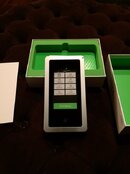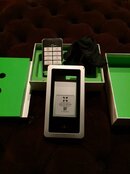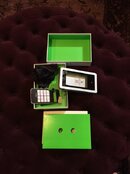You are using an out of date browser. It may not display this or other websites correctly.
You should upgrade or use an alternative browser.
You should upgrade or use an alternative browser.
More then a computer iPhone Scuba Capsule
- Thread starter JonTNY
- Start date
Please register or login
Welcome to ScubaBoard, the world's largest scuba diving community. Registration is not required to read the forums, but we encourage you to join. Joining has its benefits and enables you to participate in the discussions.
Benefits of registering include
- Ability to post and comment on topics and discussions.
- A Free photo gallery to share your dive photos with the world.
- You can make this box go away
What do you like about it, Jon?
Looks interesting, but even basic info is lacking. What is the algorithm? How does it mount to your arm? Looks like nitrox, what about trimix? Would like to see some more specs and explanation. Like that it has AI with predictive air time remaining, but would like to know more about that as well (can you set a surface reserve?).
Not worried about how long a phone will last, can always pick used ones in the future for cheap, for dedicated use.
What is the "underwater playlist?" Will divers be blasting techno-music on the reef during the dive? Better dust off my spear gun . . . .
Not worried about how long a phone will last, can always pick used ones in the future for cheap, for dedicated use.
What is the "underwater playlist?" Will divers be blasting techno-music on the reef during the dive? Better dust off my spear gun . . . .
JonTNY
Registered
What do you like about it, Jon?
I thought I responded to this sorry for the delay.
Here's what I like about it:
1) Its incredibly robust.
2) Photo/video is great and a big improvement to the GoPro because you can see exactly whats being shot on the screen
3) The computer is nice with tri-mix and ccr support.
4) Navigation feature is nice and well implemented.
5) Future transmitter integration is important especially for tracking multiple divers, this could be a help with instructors and "vacation" dive guides, since most of the vacation dive crowd doesn't dive a enough to stay on top of acquired skill sets.
6) MP3 and boot reader features are nice as well for those long deco hangs.
Whats most interesting is the ability to build additional features/software because this platform uses the computing power of the iPhone so it can do whatever you want it to.
There are also some surveying applications but that niche is fairly small, even in its current state it saves valuable time when it comes to cave survey.
dmaziuk
Contributor
What are the key features of value?
When you flood your dive computer, you lost your dive computer. When you flood your iPon you lost you camera, your phone, your tinder, and your dive computer.
JonTNY
Registered
When you flood your dive computer, you lost your dive computer. When you flood your iPon you lost you camera, your phone, your tinder, and your dive computer.
Fair enough but you'll have a tough time flooding this device.
dmaziuk
Contributor
Fair enough but you'll have a tough time flooding this device.
On a diving vacation that might be considered a downside.
RonR
Contributor
This kind of solution- putting a phone in a waterproof housing with a depth sensor and interface, and writing an app- comes up every so often. I'll offer a designer- developer's quick thoughts as to some pros and cons.
Pros:
-Ron
Pros:
- Being able to use a mass market device, available at a low cost, which has a lot of computing power, a big screen, and ancillary features, like a camera, fully integrated. Older model phones are available cheaply, there’s no reason you would need to use your primary phone, since you can’t make calls underwater.
- From a developer or designer’s side, this is a vastly easier task, requiring a fraction of the effort needed to develop a dedicated instrument. You can take advantage of the OS, development tools, and already finished interface elements that make app development so accessible. The skill set needed is much less, and adding features is easy, it’s like desktop programming, not embedded systems development.
- Every time an underwater housing is opened, there is some non-zero chance it won’t seal well enough to prevent a leak, most likely due to operator error, not necessarily design or construction. And since the batteries don't last too long, opening the housing will be very regular.
- Phones- iOS or Android, are NOT using real-time operating systems. There are many very good reasons why safety related instruments that need to operate in time critical applications (aviation, automotive, industrial controls) are not based on these kinds of platforms, but are typically designed either from bare metal or using a dedicated RTOS. That’s not to say that a phone based system won’t work, they do. But as a designer who has to confront what can happen in firmware when divers do unexpected things, or the hardware glitches, I really wonder how those (hopefully rare) issues could be handled given the limitations of a consumer device. A non real-time OS can potentially allow your app to be locked up or preempted by some background task.
-Ron
CuzzA
Wetwork for Hire
I could see this as a viable option for some divers if the housing cost ~$100-200 to really compete and take market share from the monochrome puck computer market, but for a grand, no thanks. At that price point there are some very nice dedicated dive computer options.
Similar threads
- Replies
- 1
- Views
- 220
- Sticky
- Article
- Replies
- 0
- Views
- 407
- Replies
- 25
- Views
- 2,653
- Replies
- 11
- Views
- 1,719
- Replies
- 9
- Views
- 870









